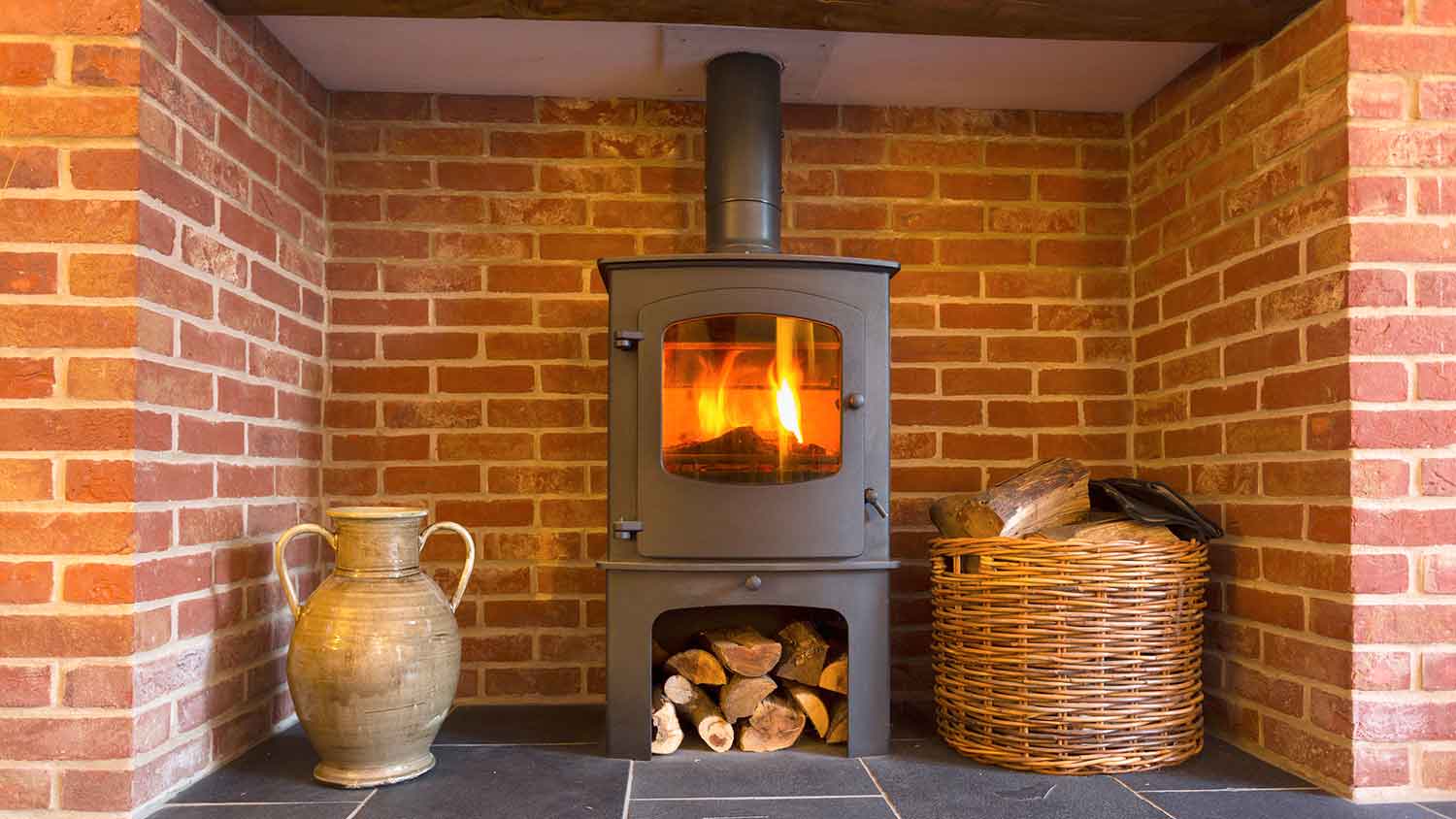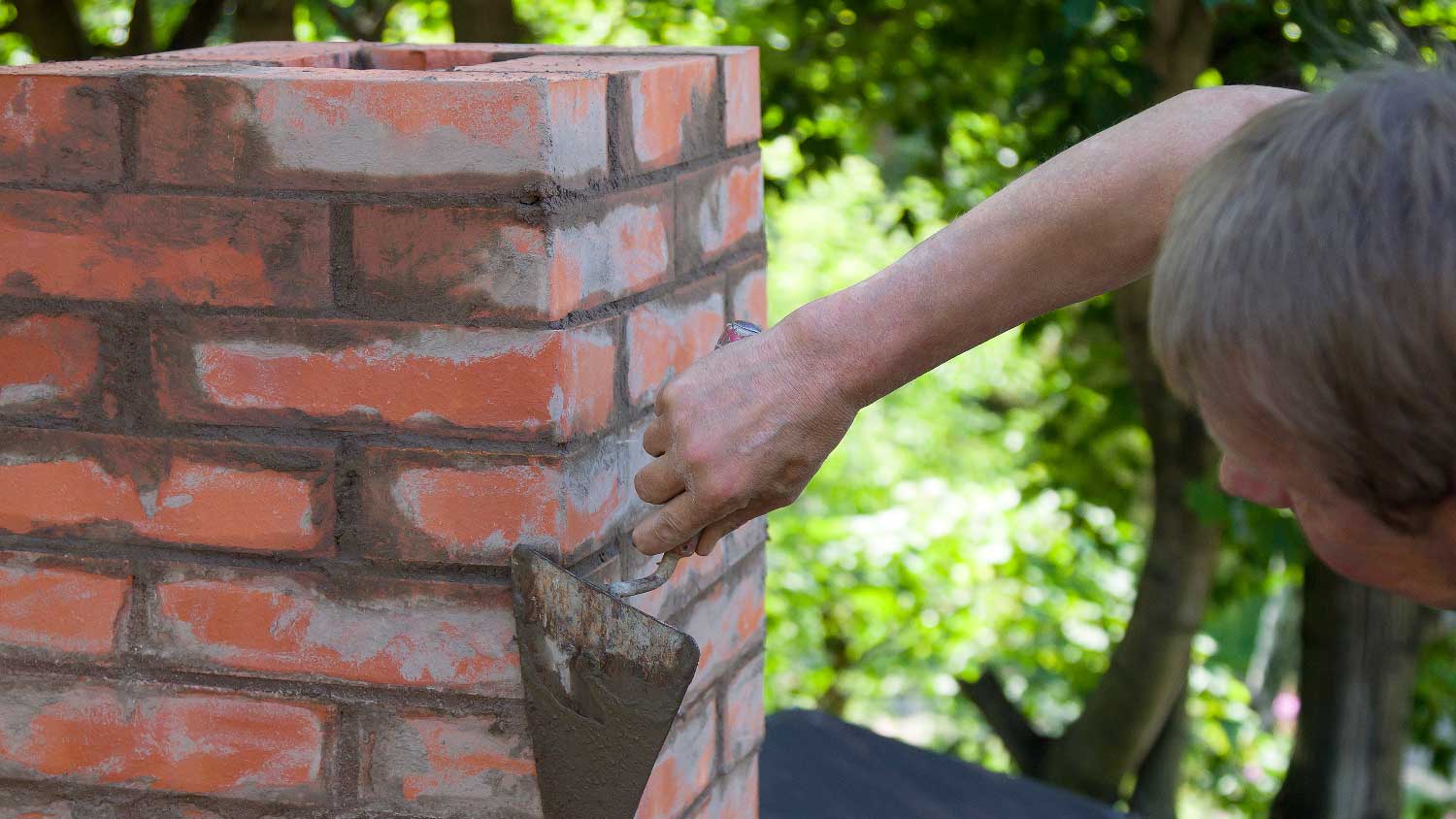
If you’re experiencing chimney airflow problems, a new damper may be in order. Use this guide to learn what goes into your chimney damper replacement cost.
The standard chimney flue sizes are 8-by-8 inches, 8-by-13 inches, and 13-by-13 inches, but that’s only part of the story


A chimney flue helps lead smoke away from the home.
Choosing the correct flue size ensures the chimney works properly.
Common chimney flue sizes are 8-by-8 inches, 8-by-13 inches, and 13-by-13 inches.
If you have the wrong size flue, contact a professional.
Most wood-burning or gas fireplaces have a flue, and the same is true of any related appliance like a wood-burning stove. Simply put, a flue is an open vertical space in a chimney that leads smoke away from the home via the firebox. Chimney flues come in a wide variety of sizes to suit the internal specifications. The most common flue sizes are 8-by-8 inches, 8-by-13 inches, and 13-by-13 inches, but they vary wildly.

A chimney flue is a duct that runs from the firebox, which is where the fire burns, to the top of the chimney. It allows smoke to escape the home. As stated above, most wood-burning and gas fireplaces have a flue, but the same isn’t true of gel or faux fireplaces. Flues are primarily made from clay tile or stainless steel. In some cases, a standard chimney liner is referred to as a flue.
The most common rectangular flue sizes found in post-war residential construction are 8-by-8 inches, 8-by-13 inches, and 13-by-13 inches. If you have a home that’s on the newer side, the flue size will likely measure out to one of those three options. However, many older homes feature chimneys with flue sizes that shoot up to 17-by-17 inches and even bigger in some cases. Additionally, homes with unique designs will likely buck the aforementioned flue size trends.
The most common round flue sizes are 8 inches, 10 inches, and 12 inches.
| Rectangular Flue Size | Flue Area |
|---|---|
| 8-by-8 in. | 42 sq. in. |
| 8-by-13 in. | 76 sq. in. |
| 12-by-12 in. | 102 sq. in. |
| 13-by-13 in. | 127 sq. in. |
| 13-by-18 in. | 173 sq. in. |
To measure the right size chimney flue, start by grabbing a tape measure. Begin with the inside diameter of the flue opening at its narrowest point and take width and depth measurements. If the interior is rounded and not rectangular, take additional measurements at the widest point. Remember, this work starts at the flue opening, which is typically on the roof. Be sure to wear the proper safety gear and have some helpers nearby.
Better yet, hire a pro to handle all of your chimney flue needs. You shouldn’t mess around with repairs, replacements, or additions to your chimney or its various parts if you’re not an experienced pro. Doing so could put the safety of your chimney, and therefore your home, at risk.

Chimneys have been around since Ancient Rome, so there are all kinds of things that impact the flue size. In other words, there are as many flue sizes as there are chimney designs.
Each chimney is like a snowflake, especially when dealing with older homes. The type of chimney, along with its design, will determine the flue size. After all, there’s only so much room inside of that chimney. Even more complicated? Each chimney type comes in different shapes and designs. For example, masonry chimneys are typically rectangular but are sometimes rounded. All of this data impacts the internal dimensions which, in turn, impacts the flue size.
Wood-burning and gas stoves use chimneys that are similar in design to the ones found in the hearth, with one major caveat: They come in different sizes. As such, these chimneys require specialized flues. In the vast majority of cases, chimneys attached to appliances are smaller than traditional chimneys, but even that is only true most of the time.
Older chimneys fail. Heck, clay chimneys tap out after around 25 years. Once the interior of a chimney starts showing wear, this could impact the flue size. For instance, you may need a custom size for a particular portion of the chimney where the building materials are worn down or missing, as the interior in this section is more spacious than the rest. You know the drill here: Call in a pro if you think your situation is unique.
Determining the exact chimney flue size can be slightly complex, so let’s go over why it matters. Both oversized and undersized flues impact the overall efficacy of a chimney. Oversized flues lead to insufficient heat retention, lack of air velocity, poor airflow, and difficulty in maintaining an even temperature.
Undersized flues are even worse, as this completely hampers the ability of the system to function. This leads to dangerous smoke spillage, in addition to limited airflow, increased back pressure, and the accumulation of creosote.
This is an easy one, though it’ll cost you some serious bucks: If you have the wrong size chimney flue, the best course of action is to get it replaced. Contact a local chimney repair professional to install a new liner that is properly sized for your fireplace or appliance. Unfortunately, this is a labor-intensive process that requires extensive expertise and plenty of time. A new chimney liner costs anywhere from $1,500 to $5,000, and it’s not a DIY-friendly job. Common materials for these flues include stainless steel, clay, terracotta, and thermocrete.
From average costs to expert advice, get all the answers you need to get your job done.

If you’re experiencing chimney airflow problems, a new damper may be in order. Use this guide to learn what goes into your chimney damper replacement cost.

Discover the average chimney tuckpointing cost, key price factors, and expert tips to help you budget and save on your next chimney repair project.

The average cost to repair or replace a chimney crown depends on the damage, material, and any other chimney maintenance services bundled into your project.

Learn how to clear a blocked flue to decide if you have the skill and the gear to tackle the task or if it’s best left to the professionals.

Wondering what is a chimney damper? A chimney damper is a small flap that allows you to open and shut the airflow through your chimney.

The process of how to paint a brick chimney comes with a few important caveats, but it’s definitely a worthwhile project to keep your brick strong and in good shape.